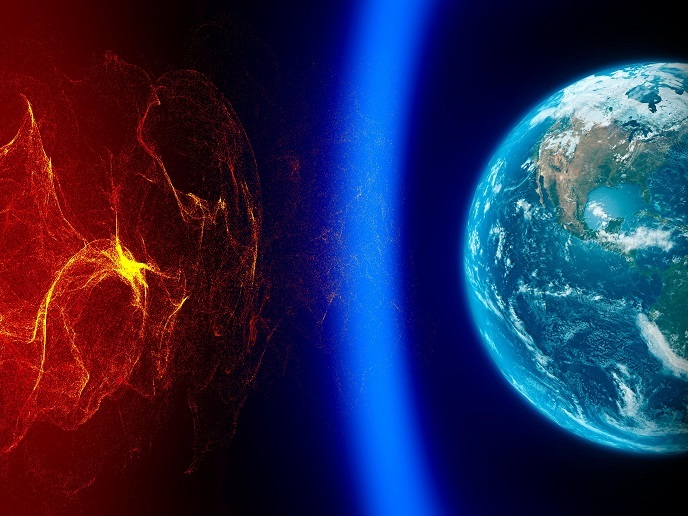And now the (space) weather…
Coronal mass ejections (CMEs) are a sudden and violent phenomenon of space weather that can occur between once every few days and several times a day, and are characterised by an 11-year cycle. When the Sun’s outer atmosphere (corona) spews out plasma and energy in a CME event, some reaches Earth, leading to dramatic consequences. Complex magnetic events can occur depending on the size, speed and magnetic strength of particles as they reach the magnetosphere, travel into the ionosphere, and continue through to the lower atmosphere and on to the ground. The SOTERIA(opens in new window) (Solar-terrestrial investigations and archives) project improved the way relevant data concerning this phenomenon is stored, processed, analysed and interpreted; going beyond the present state of the art with regard to details and time resolution. The initiative required close collaboration between experts from different fields of space, solar and geophysics research. Our Sun is entering an increasingly active phase of the current cycle, yet its initiation has been delayed for unknown reasons. SOTERIA’s data tools helped scientists to explain and understand why this is happening. The project covered all aspects of Sun-Earth interactions, including events at the lowest visible strata of the Sun and the corona, solar wind phenomena and variability in ultraviolet radiation. SOTERIA involved the analysis and processing of relevant data from 18 satellites, including several from the European Space Agency (ESA). The study was complemented by a large set of data from European ground-based observatories. Project partners also utilised and developed theoretical and simulation models for interpreting the space weather data. Modelling and analysis tools for state-of-the-art space weather prediction were located in an easily accessible format on a single website. The technology was used to increase knowledge of space weather and, in particular, Sun-Earth interactions, which could present a threat to satellites, astronauts and ground-based infrastructure.







